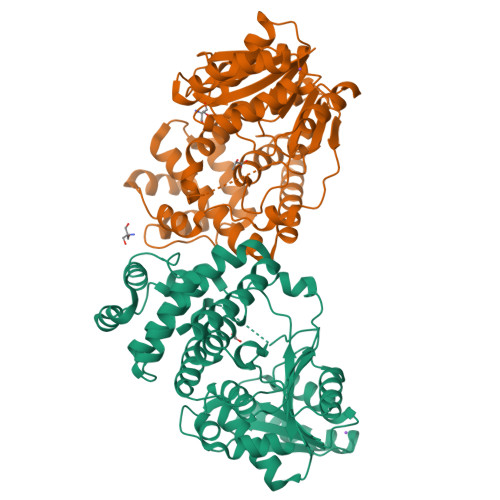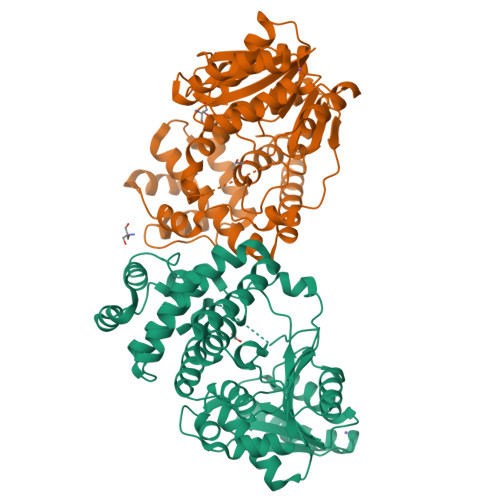Substrate and Metal Ion Promiscuity in Mannosylglycerate Synthase.
Nielsen, M.M., Suits, M.D.L., Yang, M., Barry, C.S., Martinez-Fleites, C., Tailford, L.E., Flint, J.E., Dumon, C., Davis, B.G., Gilbert, H.J., Davies, G.J.(2011) J Biological Chem 286: 15155
- PubMed: 21288903
- DOI: https://doi.org/10.1074/jbc.M110.199844
- Primary Citation of Related Structures:
2Y4J, 2Y4K, 2Y4L, 2Y4M - PubMed Abstract:
The enzymatic transfer of the sugar mannose from activated sugar donors is central to the synthesis of a wide range of biologically significant polysaccharides and glycoconjugates. In addition to their importance in cellular biology, mannosyltransferases also provide model systems with which to study catalytic mechanisms of glycosyl transfer. Mannosylglycerate synthase (MGS) catalyzes the synthesis of α-mannosyl-D-glycerate using GDP-mannose as the preferred donor species, a reaction that occurs with a net retention of anomeric configuration. Past work has shown that the Rhodothermus marinus MGS, classified as a GT78 glycosyltransferase, displays a GT-A fold and performs catalysis in a metal ion-dependent manner. MGS shows very unusual metal ion dependences with Mg(2+) and Ca(2+) and, to a lesser extent, Mn(2+), Ni(2+), and Co(2+), thus facilitating catalysis. Here, we probe these dependences through kinetic and calorimetric analyses of wild-type and site-directed variants of the enzyme. Mutation of residues that interact with the guanine base of GDP are correlated with a higher k(cat) value, whereas substitution of His-217, a key component of the metal coordination site, results in a change in metal specificity to Mn(2+). Structural analyses of MGS complexes not only provide insight into metal coordination but also how lactate can function as an alternative acceptor to glycerate. These studies highlight the role of flexible loops in the active center and the subsequent coordination of the divalent metal ion as key factors in MGS catalysis and metal ion dependence. Furthermore, Tyr-220, located on a flexible loop whose conformation is likely influenced by metal binding, also plays a critical role in substrate binding.
Organizational Affiliation:
Institute for Cell and Molecular Biosciences, Newcastle University, Medical School, Newcastle upon Tyne NE2 4HH, United Kingdom.





















